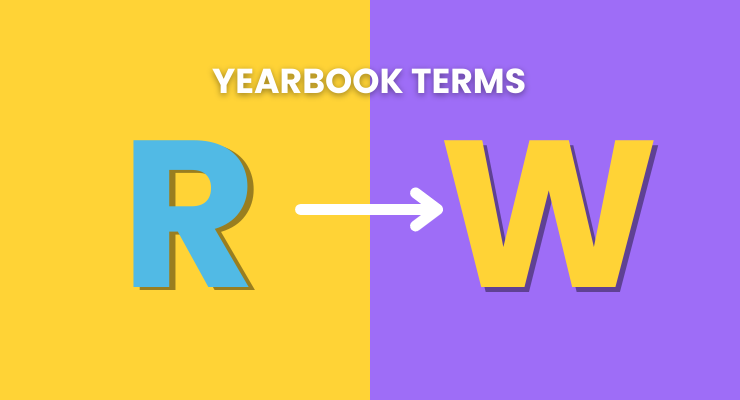If you have been reading the previous posts on yearbook terms, then you should have a pretty strong vocabulary foundation that would allow you to have meaningful conversations with those involved in the yearbook planning process. Here are a few more terms to further increase your yearbook vocabulary so that tasks can be communicated and understood clearly.
Terms R to W
Resolution. Resolution indicates the sharpness of an image. It is usually measured in dots per inch (dpi); however, it is measured in pixels on a digital platform.
RGB (Red, Green, Blue). RGB is a color model that uses an additive method of producing colour when printing. In this process, colour is created by adding red, green, and blue pixels to a black base.
Rule of Thirds. The “rule of thirds” is a guideline in photography that emphasizes placing the primary subject in the 1/3 sector on either the left or right side of an image. This allows the negative space and the subject to be balanced so that the composition is attractive to viewers.
Sans Serif Fonts. Sans serif fonts are serif fonts without the decorative elements. They provide a modern, clean, and minimalistic appearance to the text. Because san serif fonts are simplistic, they work well in digital projects and print headlines.
Serif Fonts. Serif fonts are typefaces that include small decorative extensions (serifs) at the end of letter strokes. These fonts are best for lengthy text due to their legibility.
Spread. A spread refers to two pages that face each other in a yearbook.
Style Guide. A style guide sets the standards for typography, graphic design, and copywriting that will be used in a yearbook so that the designs are consistent.
Template. A template is a layout that is predesigned to increase efficiency and consistency of a page design. Templates can simplify the design process, but they can also be restrictive if they do not have the capacity to make alterations.
Theme. A yearbook theme is an idea or concept that ties all the sections and stories of the yearbook together to maintain consistency in the messaging throughout.
White Space (or Negative Space). White space or negative space is the empty area surrounding objects in the yearbook design. It has the ability to draw viewers’ attention to a particular area on the page or spread. White space is important because it reduces information overload for viewers whose eyes may become tired from overstimulation.
Widows. A widow is an opening line of a paragraph that is isolated from the rest of the text and found at the start of a column or page.
Now that you and your team are familiar with the basic yearbook terminology, communicating ideas and coordinating tasks will be far less challenging. Creating harmony among everyone involved is essential to making your yearbook a success because making your product one for the books means that everyone must be on the same page.


